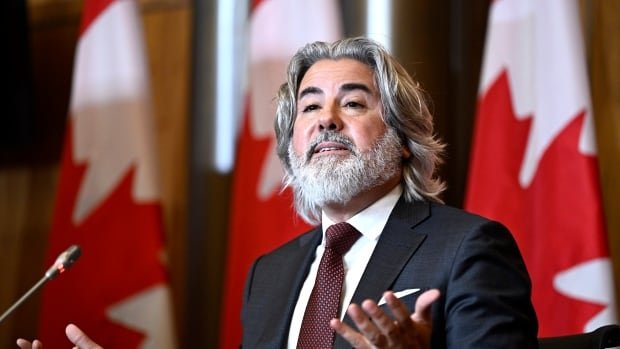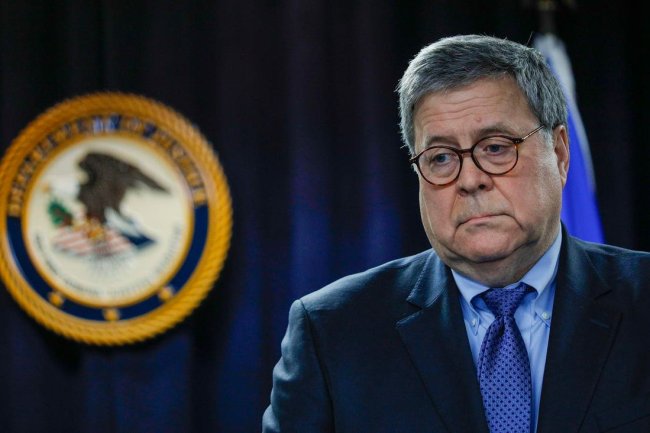Where the federal government has been spending your money on social media
Heritage Minister Pablo Rodriguez announces the federal government is suspending its advertising on Meta platforms at a news conference on July 5, 2023. (Justin Tang/Canadian Press )Ads promoting Canada's 150th anniversary celebrations, annual budgets and outreach to veterans were among the biggest items in the federal government's social media ad spending over the past seven years, a CBC News analysis shows.CBC queried some federal departments after obtaining a document listing expenses by department. The document was produced in response to a question posed by Conservative MP Michael Cooper in the House of Commons last January. One of the biggest spenders has been the Department of Canadian Heritage, which paid Facebook more than $1 million in 2017 alone, when it was promoting Canada's 150th anniversary celebrations. It spent more than $500,000 combined in the other years since 2016.At a news conference on Wednesday, Heritage Minister Pablo Rodriguez announced the government would be

Ads promoting Canada's 150th anniversary celebrations, annual budgets and outreach to veterans were among the biggest items in the federal government's social media ad spending over the past seven years, a CBC News analysis shows.
CBC queried some federal departments after obtaining a document listing expenses by department. The document was produced in response to a question posed by Conservative MP Michael Cooper in the House of Commons last January.
One of the biggest spenders has been the Department of Canadian Heritage, which paid Facebook more than $1 million in 2017 alone, when it was promoting Canada's 150th anniversary celebrations. It spent more than $500,000 combined in the other years since 2016.
At a news conference on Wednesday, Heritage Minister Pablo Rodriguez announced the government would be suspending all of its social-media spending on Facebook and Instagram, platforms owned by Meta.
Rodriguez announced the ad suspension after Meta threatened to block Canadian news links in response to the government's Online News Act, C-18, which was passed last month.
The Online News Act compels online media companies like Meta and Google to pay money to news organizations each time a user accesses a story through a link on one of their products.
"Facebook has decided to be unreasonable, irresponsible," Rodriguez said. While Google also has threatened to block Canadian news links, Rodriguez has said his government is still in negotiations with that company.
In a statement issued to CBC News, his department said the spending in 2017 to promote Canada 150 was part of a year-long campaign and Facebook is "one of the most popular used platforms in Canada."
Government purchases of Google ads are not listed individually in the document released to Cooper because he did not ask for that breakdown. Google and YouTube, the video platform owned by the same company, appear a handful of times in a category that lumps some social media platforms together.
In 2021, Transport Canada spent $6,060.74 on Google ads for a drone safety advertising campaign.
Fisheries and Oceans, the Communications Security Establishment and the Department of Finance have all spent money on YouTube between 2016 and now.

A note from Finance in 2017 described a $74,833.13 YouTube ad purchase as a promotion for Budget 2017 and "the newly redesigned Canada Child Benefit."
Facebook and Instagram received the lion's share of social media spending by the government. The document reported at least $56 million in federal government ad spending for the Meta platforms since 2016.
Finance spent nearly $2 million on Meta platforms between 2016 and now.

When asked where that cash went at a news conference on Thursday, Finance Minister Chrystia Freeland instead spoke about the importance of standing up to American "tech giants".
"The work that minister Rodriguez is doing, that our government is doing, to ensure that our tech giants pay their fair share and support Canadian newsrooms is absolutely essential," she said.
A separate annual report compiled by the Treasury Board of Canada estimated federal government ad spending on Meta platforms at just above $40 million between 2017 and 2022.
The Canada Energy Regulator also spent $1,499.37 on Meta platform advertising in 2017.
"We ran Facebook ads to promote public participation opportunities in the Energy East hearing," the regulator told CBC News in a media statement, adding it favoured Facebook over other venues because it "was the best platform to reach people who might be affected by the hearing."
TikTok ad spending increased before government ban
The Treasury Board's annual report shows an uptick in government spending on the TikTok platform.
Ottawa did not touch the platform between the year it was created — 2016 — and when it really took off in popularity at the beginning of the COVID-19 pandemic.
In 2020-2021, the federal government spent at least $377,019 on TikTok marketing. In 2021-2022, that amount shot up to $1,717,617.
While the federal government banned TikTok from all government devices in February, citing security concerns, it never officially declared it would stop advertising on the platform, which is owned by the Beijing-based ByteDance. Critics have warned the Chinese government could lean on ByteDance to access users' private data, a claim the company says is unfounded.
The Treasury Board's annual report only lists departments that spent more than $25,000 for a single ad campaign; smaller ad buys don't have to be approved by Public Services and Procurement.
Departments that spent less than $25,000 under individual contracts added up the cost of those campaigns in the answer to Cooper's question.
The biggest TikTok spender among those was Veterans Affairs, which has paid $92,334 to the company since 2021.

Veterans Affairs also spent nearly $2.5 million on Meta between between 2016 and now, according to the document.
A spokesperson for Veterans Affairs said the department has two big spending campaigns every year — one focused on Veterans' Week in November and another promoting mental health for veterans from mid-December to February.
The federal government did not answer questions about whether it plans to stop buying ads on TikTok.
It's also not clear where Ottawa now plans to spend the money that will no longer go to Facebook or Instagram.
"We're going to reinvest it. We're not going to keep it. We're going to reinvest it in major campaigns, but we'll get back to you on that," Rodriguez told journalists, adding that the cash could go toward traditional media outlets.
As a news organization, the CBC could see a financial benefit under C-18, which requires the CBC to provide an annual report on any compensation for news it receives from digital operators.
What's Your Reaction?













